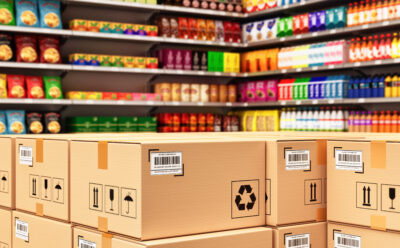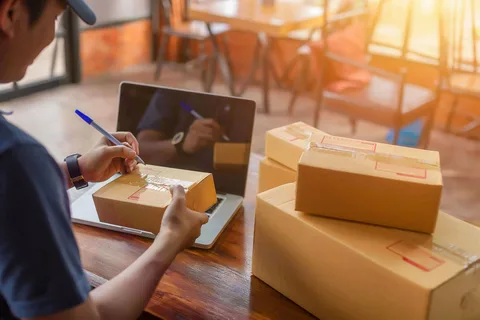In today’s fast-paced consumer economy, product presentation, protection, and portability are more critical than ever. One term that stands out in thi
In today’s fast-paced consumer economy, product presentation, protection, and portability are more critical than ever. One term that stands out in this realm is boxed packaged goods. This concept goes beyond just putting a product in a box—it encompasses branding, functionality, sustainability, and marketing.
This article explores the importance, types, benefits, challenges, and future trends of boxed packaged goods, shedding light on why they are central to nearly every industry that delivers tangible products.
Must visit: experttrading

What Are Boxed Packaged Goods?
Boxed packaged goods refer to consumer products that are enclosed in a box—often made from cardboard, corrugated fiberboard, or other rigid materials—for sale, transport, or storage. These packages serve multiple roles: they protect the contents inside, deliver branding messages, ensure ease of handling, and, increasingly, reflect a company’s environmental values.
From cereal boxes and electronics to luxury watches and subscription kits, boxed packaging spans across various industries. It’s a universal solution adapted for scale and convenience.
Types of Boxed Packaged Goods
Boxed packaging isn’t one-size-fits-all. Depending on the product type and business goals, companies choose from several box types:
1. Folding Cartons
These are lightweight boxes typically used for items like cosmetics, pharmaceuticals, and food. They are easy to print on and cost-effective for mass production.
2. Rigid Boxes
Often used for premium products (e.g., iPhones or high-end watches), these offer enhanced protection and aesthetics. They are non-collapsible and exude quality.
3. Corrugated Boxes
The most common for shipping and bulk transport, corrugated boxes are strong and recyclable. They come in single, double, or triple-wall constructions for different strength levels.
4. Custom Die-Cut Boxes
Used for branding and custom-fit products, die-cut boxes enhance presentation and security. These are often seen in subscription boxes or e-commerce deliveries.
5. Display Boxes
Part packaging, part marketing tool, these are designed to stand on retail shelves while showcasing the product inside. Think point-of-sale impulse items.
Importance of Boxed Packaging in the Consumer Market
The outer box does far more than hold the product. Here’s why boxed packaged goods are essential:
1. Brand Identity and Marketing
A box often gives the first impression of a product. Colors, fonts, design, and textures all communicate brand identity. Apple’s minimalist white boxes, for instance, scream luxury and simplicity.
2. Product Protection
Boxes protect goods from damage during shipping, handling, or display. Especially for fragile items like electronics or glassware, sturdy packaging ensures customer satisfaction.
3. Ease of Transportation and Storage
Boxes make stacking and organizing simpler in warehouses and stores. Uniform shapes and sizes reduce logistics issues and lower costs.
4. Sustainability and Consumer Perception
With environmental awareness on the rise, companies are leaning into recyclable and biodegradable boxed packaging. Consumers increasingly prefer brands that show commitment to green packaging.
Benefits of Boxed Packaged Goods for Businesses
From small startups to global conglomerates, boxed packaging offers several key benefits:
1. Enhanced Shelf Appeal
A well-designed box catches attention in a crowded retail space. It can turn browsers into buyers with compelling visuals and messaging.
2. Informational Space
Boxes provide space for necessary information—ingredients, usage instructions, warnings, and certifications—meeting regulatory and consumer needs.
3. Cost-Efficiency in Bulk
Boxes can be produced and printed at scale with modern machinery, reducing per-unit costs significantly.
4. Customization Opportunities
With digital printing, businesses can quickly produce limited-edition runs or personalize packaging without high setup costs.
Consumer Behavior and Packaging Trends
Today’s consumers are more informed and environmentally conscious. Here’s how these trends impact boxed packaged goods:
– Minimalist Design
Consumers favor clean, simple packaging that clearly communicates the product’s value. Less clutter equals more trust.
– Eco-Friendly Materials
Recyclable, compostable, and reusable boxes are gaining popularity. Companies using kraft paper or FSC-certified materials are perceived more favorably.
– Unboxing Experience
Especially in e-commerce, how a customer experiences opening a product matters. Think of YouTube “unboxing” videos—a premium box creates emotional satisfaction.
– Smart Packaging
Some boxes now include QR codes, NFC tags, or AR elements to engage customers with digital experiences or authenticity verification.
Industries That Rely Heavily on Boxed Packaged Goods
1. Food and Beverage
From cereal to frozen meals, boxes ensure hygiene, portion control, and branding in grocery aisles.
2. Electronics
Delicate and often high-value, electronics require durable boxed packaging with foam inserts, anti-static layers, and tamper-evident seals.
3. Fashion and Apparel
Retail boxes and mailers help preserve garment integrity and brand presentation, especially for luxury or subscription-based fashion brands.
4. Beauty and Personal Care
These often use folding cartons that showcase vibrant branding and carry vital product information, while also allowing for tamper-evidence.
5. Healthcare and Pharmaceuticals
Boxes are vital for labeling, dosage information, expiration dates, and safety seals. Compliance with health regulations is a top priority.
Challenges in Boxed Packaging
Despite their popularity, boxed packaged goods also come with challenges:
1. Environmental Concerns
If not sourced sustainably, paper and cardboard production can contribute to deforestation and pollution.
2. Cost and Storage
High-quality boxes can be expensive, and they take up more storage space than flexible packaging like pouches or shrink-wrap.
3. Damage Risks
While boxes protect contents, poor design or weak materials can lead to box collapse or product damage, particularly during shipping.
4. Counterfeit Risk
High-value boxed goods are susceptible to counterfeiting. Brands need to adopt security measures like holograms or serial numbers.
Innovations in Boxed Packaging
Technology and design advancements are shaping the next generation of boxed packaged goods:
– Biodegradable Coatings
These replace traditional plastic lamination, making the entire box compostable.
– Modular Designs
Boxes that interlock or can be reused by the customer promote sustainability and improve the consumer experience.
– Automation-Friendly Design
As more companies automate their packing lines, box designs are being optimized for robotic handling and assembly.
– Subscription Packaging
Businesses like snack boxes or beauty kits are focusing on memorable, branded packaging that builds customer loyalty.
Future Outlook
As e-commerce grows and sustainability becomes non-negotiable, the demand for well-designed, eco-friendly boxed packaged goods is set to rise. Packaging will no longer be an afterthought—it will be a crucial part of product strategy.
The integration of smart features, AI-driven design tools, and blockchain for authenticity tracking may redefine what a “box” can do in the coming years.
FAQs: Boxed Packaged Goods
1. What materials are most commonly used in boxed packaging?
Cardboard, corrugated fiberboard, kraft paper, and rigid chipboard are the most common. Some premium brands use specialty textured paper or metallic finishes.
2. Are boxed packaged goods recyclable?
Yes, most are recyclable, especially if they are free from plastic coatings or lamination. However, multi-material or laminated boxes may need special processing.
3. What’s the difference between folding cartons and rigid boxes?
Folding cartons are lightweight, collapsible, and often used for low to medium-priced items. Rigid boxes are sturdier, non-collapsible, and typically used for luxury or fragile goods.
4. How do businesses choose the right box type for their products?
It depends on the product’s fragility, size, market positioning, cost constraints, and sustainability goals. A combination of design, engineering, and marketing strategy guides the choice.
5. Why is boxed packaging important in e-commerce?
Boxes protect goods in transit, provide a branded experience, and reduce damage-related returns. They also help create a consistent and professional impression.
6. Can boxed packaging be customized for small businesses?
Yes. Digital printing and small-batch manufacturing have made custom boxes accessible to startups and small-scale sellers.
7. How does boxed packaging affect consumer perception?
A well-designed box can elevate the perceived value of a product. It communicates professionalism, quality, and care, influencing buying decisions.
Conclusion
Boxed packaged goods play a pivotal role in how products are delivered, experienced, and remembered. Far from being mere containers, these boxes are marketing tools, protectors, storytellers, and sustainability champions. As industries evolve and consumer expectations grow, so will the innovation and importance of boxed packaging.
Whether you’re a business owner, product designer, or curious consumer, understanding the depth behind this everyday concept reveals its power in shaping modern commerce.



COMMENTS